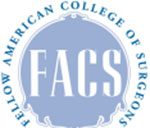Breast cancer remains a serious issue in the United States with 1 out of 8 women developing breast cancer sometime during their lifetime. The ability to reconstruct a breast that has been removed or partially removed is one of the mainstays of plastic surgery. The goal of reconstruction is to recreate breast or breasts that have a very natural look and feel, and allow the woman to return to normal life. While generally the most common reason for reconstruction is due to breast cancer, reconstruction can also be used for women who undergo prophylactic or elective breast removal due to such issues as breast cancer gene mutation or if they have a congenital failure of breast development.
Breast Reconstruction Options
There are generally two types of reconstruction for the breast. A woman can either use her own body tissue (autologous reconstruction) or can use various types of implant reconstructions. There are obviously pros and cons of both types, and in order to determine the best approach for each person, the woman would undergo a consultation with Dr. Kinney and discuss various options. What may be right for one person may not be beneficial to another.
Reconstruction from Body Tissue
Autologous reconstruction, or using the woman’s own body tissue to reconstruct a breast, is the mainstay of Dr. Kinney’s practice. Various body parts can be used as the donor site. The most common site is the lower abdominal area, but if for some reason this is not available, then either the buttocks or thighs also offer excellent choices for tissue to reconstruct the breast. This allows for more precise and exact reconstruction techniques. Also, Dr. Kinney specializes in perforator flaps. These are considered the “Gold Standard” for any type of reconstruction. Perforator flaps involve taking skin and fatty tissue to reconstruct the breast, but at no time sacrificing any muscle. The well-known DIEP flap (from the abdomen), the SGAP flap (from the buttock), and the PAP flap (from the posterior thigh) are examples of perforator flaps which afford excellent reconstruction options. Use of these techniques requires specialized skill and training, as well as a significant amount of experience. These types of techniques can create a very natural look and feel of the breast, and as an added benefit can contour the donor sites to make a much more pleasing and overall aesthetic look.
Implant Reconstruction
The implant technique can either be done as a two-stage procedure or as a single stage. The most common way is the two-stage procedure. This involves placing a device called a tissue expander beneath the chest wall muscle, and then on a weekly basis in the office slowly adding saline to the device. This gradually stretches the chest wall to create a new breast mound that, once fully stretched, is allowed to soften over several months. The patient is then brought back to the operating room at a second operation where the expander is removed and then replaced with permanent implants. These can be either silicone or saline implants, but the majority of women do choose silicone for the more natural look and feel. A small percentage of patients, if they have the native breast size for this to work, can have a direct-to-implant reconstruction, where at the time of the mastectomy an implant is placed without the need for an expander. There are a limited number of patients where this is available.
Both types of reconstruction have their advantages and disadvantages, and these techniques would be discussed in full detail at the time of the consultation. Some patients who will have or have had radiation therapy generally are not as good a candidate for the implant type of reconstruction; therefore, they would be better suited for autologous reconstruction.
Dr. Kinney’s Experience
Experience plays an important role in these types of reconstructions. Dr. Kinney has been using microsurgical techniques for reconstruction his entire practice beginning in 1993. For over the past 13 years, he has used perforator flap reconstruction almost exclusively on all types of breast cancer reconstruction. He was one of the very first surgeons in the State of Wisconsin to perform the DIEP flap, and to date has one of the single largest series of DIEP flap reconstructions in private practice in the State of Wisconsin. People from various parts of the country have come in to this practice to have this procedure performed.




